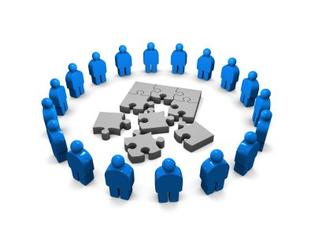
High Standards… or Impeding Standards
After watching:
One of the topics they both spoke to that stood out to me was standards. In the state of Virginia we have the Standards of Learning. Many other states have adopted the common core standards. These standards were put into place to ensure that the students within the same state, or in the case of common core multiple states, were learning the same material in classes. In both TED Talks the presenter persuades the audience that standards have hinder education progress in America.
At first I want to agree with these presenters, I mean why shouldn’t I?
When reconsidering we must think about the curriculum currently in schools. We have our core subjects of math, English, social studies, and science. Then we have our electives as well as other required courses. The electives should have a looser framework for the curriculum and truly let the students explore these subjects to find the aspects that interest them. I will now segregate the core courses into two groups social studies & science and math & English. In social studies and science there are numerous subjects to study and they do not necessarily build on one another (one does not need Chemistry to do Biology, one does not need world history to do U.S. history). However the more you know in one field the more connections you can make and the more understanding you will have. This being said we could ultimately get away with relieving the students of a standardized test in these fields instead they would have end of year projects to showcase their learning. These projects would have even greater value if we could have them use their knowledge to solve real world problems. Groups or individuals, again, would be able to explore these subjects to find the aspects that interest them.
I will now segregate the core courses into two groups social studies & science and math & English. In social studies and science there are numerous subjects to study and they do not necessarily build on one another (one does not need Chemistry to do Biology, one does not need world history to do U.S. history). However the more you know in one field the more connections you can make and the more understanding you will have. This being said we could ultimately get away with relieving the students of a standardized test in these fields instead they would have end of year projects to showcase their learning. These projects would have even greater value if we could have them use their knowledge to solve real world problems. Groups or individuals, again, would be able to explore these subjects to find the aspects that interest them. However, I feel math and English build on themselves. Those who do not have the proper foundation in each subject with fail at the next level. Those who fail to comprehend Algebra will certainly have trouble in Calculus. Those who fail to use proper grammar will certainly. Thus we need students to have knowledge of certain material within these classes and thus arises standards. We need a way to ensure students have grasps certain concepts to be able to move on. Are the Standards of Learning an answer? Yes. Are Standards of Learning the best answer out there? Definitely not but I do not think we should abandon ship immediately before finding a sound replacement.
However, I feel math and English build on themselves. Those who do not have the proper foundation in each subject with fail at the next level. Those who fail to comprehend Algebra will certainly have trouble in Calculus. Those who fail to use proper grammar will certainly. Thus we need students to have knowledge of certain material within these classes and thus arises standards. We need a way to ensure students have grasps certain concepts to be able to move on. Are the Standards of Learning an answer? Yes. Are Standards of Learning the best answer out there? Definitely not but I do not think we should abandon ship immediately before finding a sound replacement. 
Generation Like
Generation Like is a documentary following numerous people on their journey exploring digital identity. As we learned in adolescent psychology “getting likes” gives us a rush of dopamine, thus we seek it more and more. This behavior extends past adolescence into adulthood. Sometimes people will not only chase likes for dopamine hits, but they will chase likes for monetary purposes.
How does understanding how children use the Social Web prepare us for our instruction in the classroom?
Below I have broken down some sub categories for us to be reminded of while using technology in the classroom. Keeping these in mind will keep students more involved, retain more information, and be more excited about learning.
 Interacting
Interacting
We know that different kids will remember more through different modes of learning, particularly visual, audio, kinesthetic, and tactile. More recent research has shown that giving students information through multiple stimuli at the same time helps them retain information better (i.e. having video and audio clips accompanying slide shows). The more interactive presentations are, the more kids will be involved as was as retain focus on the lesson.

Collaborating
The internet was made to share ideas effortlessly. With this, we can collaborate with nearly anyone. Kids want to collaborate with each other. They use Facebook, SnapChat, Instagram, and much more all the time. Using blogs that multiple people are allowed to update is just one example of collaborating using technology. Technology even allows students from different classes to work together, students to work at their own pace, and for students to work when it is convenient for them.

Sharing
Like we just said, students use Facebook, SnapChat, Instagram, and much more all the time. They are proud to share information and with each like they are more encouraged to share their products. Give them projects they will be proud of and yearn to share with one another. Not only are they sharing their product but they are sharing educational information in a different medium, thus teaching their classmates. The students may benefit from the explanation in a different manner than their teacher provided.
Warnings
Fame & Popularity
With new found fame and popularity that can be obtained from getting likes, new responsibility arises. The skateboarding kid we saw in the video, Steven Fernandez, is now in trouble with the law. We have seen numerous celebrities unable to handle the attention as well. The internet creates a much bigger stage but it may also be harder to get attention on it.
Extracurricular Empowerment

In Scott McLeod‘s TED Talk “Extracurricular Empowerment“, the first think I notice is the word empowerment. The word empowerment strikes me instantly because at Wegmans this is a “who we are value.” A value that the company holds dear along with four other values. Thus empowerment has already been ingrained in the brain and the concept for me already exist.
When speaking to empowerment through technology, we must first teach our students (and others) how to properly and safely use technology. This comes through exploring and using. We must guide students on proper apps and places to gather their information for educational purposes.
I think there should be a shift from traditional schooling to the act of producing a creative, tangible products especially to share with the world. It is important that the student see their knowledge come to life and relate it to the real world. This sort of education will make an impact on students instead of the traditional learning for tests.
“Education is what remains after one has forgotten what one has learned in school.” -Albert Einstein
The video shares stories of kids that have used technology to broaden their experiences in life, sometimes for educational purposes. If we give students technology, their educational horizons can broaden beyond belief. It is imperative that we use technology with purpose that gives the students opportunities that they do not have without it.
Focus Standards
The standards I will be focusing on in this class are:
G.13 (Geometry)
The student will use formulas for surface area and volume of three-dimensional objects to solve real-world problems.
G.14 (Geometry)
The student will use similar geometric objects in two- or three-dimensions to
a) compare ratios between side lengths, perimeters, areas, and volumes;
b) determine how changes in one or more dimensions of an object affect area and/or volume of the object;
c) determine how changes in area and/or volume of an object affect one or more dimensions of the object; and
d) solve real-world problems about similar geometric objects.
I will try to link activities using these standards to the 4Cs by having interactive activities. The 4Cs revolve around encompassing yourself in the material. Collaborating and communicating causes people to create a dialogue with others to talk about the material. Critical thinking and creativity cause people to think deeper about problems, having more complex problems makes students think more deeply or think outside the box to solve problems.
New Learners of the 21st Century
New Learners of the 21st Century
Quest to Learn
Quest to Learn is a school in New York City that builds on top of New York’s Educational Standards. Using the standards as their baseline, they incorporate technology at every stop. The school uses video games to captivate their students. “A game is nothing but a problem space. What is a video game? It is just a set of problems.” –James Gee, Arizona State University (9:05)
“The construct that has been most overlooked in the 21st century is the power and importance of play.”
– John Seely Brown, University of Southern California (7:02)
Collaboration
The students collaborate using different video games (including Little Big Planet). Students create levels inside the video game using the video games’ edit modes. These levels portray certain well-known stories. This style of learning engages students more than the study and test style.
“More important, even than going from consumption to production, is going production to participation.”
– Diana Rhoten, Digital Media and Learning Social Science Research Center (30:40)
Communication
The students are forced to communicate when collaborating. When they are teaching, or re-explaining, concepts to the other students, they are reinforcing their own learning. Forcing students to communicate with each other allows them to share their ideas. Before their ideas would be mostly shared with their teachers but as they communicate more they come across others ideas.
“Tinkering brings thought and action together in a very powerful and magical way… it’s like an epiphany.”
– John Seely Brown (7:25)
Critical thinking
As stated before, video games are a set of problems. While playing the games, students have to critically think to come up with the right answers. While creating the games students will have to think even deeper and have a deeper understanding of the material and concepts.
“If we teach today’s kid the way we taught yesterday, we rob them of tomorrow.”
– John Dewey (1:33)
Creativity
The students have to use their creativity to solve complex problems. While creating, creativity will shine through. Students will create unique products when given the chance. While trying to create products, such as video game levels, they will show off their creativity more than the conventional essay or test.
First Pixlr Picture

First Post
Coming soon.
